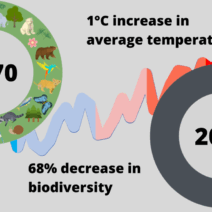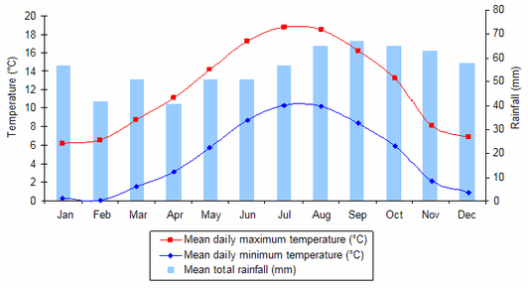Panama, a narrow isthmus connecting North and South America, embodies a curious paradox: it thrives as a conduit for global trade while simultaneously grappling with the encroaching specter of climate change. Its lush tropical rainforests, rich biodiversity, and vital ecosystems are under siege, yet the nation is emerging as a bastion of innovative environmental initiatives. Like a phoenix rising from the ashes, Panama is employing myriad strategies to combat global warming, one measure at a time.
Central to Panama’s combat against climate change is its commitment to reforestation and preservation of its irreplaceable natural resources. The country has faced significant deforestation, primarily driven by agricultural expansion and infrastructure development. However, much like a gardener who nurtures a once-barren landscape back to life, Panama is actively replanting its forests. The government, NGOs, and local communities are collaborating on extensive reforestation projects aimed at restoring degraded lands. This ecological renaissance not only sequesters carbon dioxide but also profoundly enriches biodiversity.
In 2019, Panama set a commendable goal of reforesting 1 million hectares by 2030. This ambitious initiative reflects the recognition that trees are not merely quiet sentinels of the earth but active warriors in the fight against climate change. Each sapling planted serves as a symbol of hope, a tangible step toward a sustainable future. The Panamanian model of community involvement in reforestation serves as a blueprint for other nations grappling with similar environmental challenges.
An equally compelling facet of Panama’s environmental strategy is its investment in renewable energy. The nation stands at the precipice of a green energy revolution, with plans to derive up to 70% of its energy needs from renewable sources by 2050. Harnessing the ceaseless energy of the sun and the relentless flow of its rivers, Panama is transitioning away from fossil fuels. Solar energy projects and hydroelectric plants are springing up like wildflowers after a long drought, signaling a shift towards sustainability.
The hydroelectric dams along the Chagres River exemplify this transformation. By utilizing the natural flow of the river, Panama is not only boosting its energy independence but also significantly curbing greenhouse gas emissions. Hydroelectric power, when managed responsibly, serves as a formidable ally in the battle against climate change. It provides a clean, renewable source of energy, though it must be tempered with ecological mindfulness to avoid disrupting local ecosystems.
Furthermore, Panama’s geographical position affords it a unique role in addressing climate change on a global scale. The rich biodiversity found within its borders is crucial to international ecological health. The country hosts a variety of ecosystems—ranging from coastal mangroves to mountain cloud forests—each contributing to global carbon storage and climate regulation. Protecting these areas is akin to safeguarding a well of ancient wisdom; each ecosystem holds secrets and solutions that can inform global conservation efforts.
The establishment of protected areas, such as national parks and reserves, exemplifies Panama’s protective stance. These regions serve as sanctuaries for countless species and act as vital carbon sinks. The national commitment to preserving 30% of its land and marine areas not only preserves the extraordinary array of wildlife but also lays the groundwork for sustainable ecotourism, inviting visitors to experience the verdant splendor of Panama while reinforcing grassroots conservation efforts.
Moreover, Panama’s efforts extend beyond its terrestrial boundaries. The country has recognized the pivotal role coastal and marine ecosystems play in climate resilience. Initiatives aimed at preserving coral reefs and mangroves—both critical buffers against climate impacts such as rising sea levels and extreme weather—are gaining momentum. Mangroves, in particular, act as nature’s barrier, reducing coastal erosion and providing habitat for diverse marine life. By safeguarding these ecosystems, Panama not only protects its shores but also enhances its own climate resilience.
Education and community involvement are pivotal in Panama’s strategy against climate change. Grassroots movements are gaining traction, as communities understand the importance of a localized approach to environmental stewardship. Schools are increasingly integrating environmental education into curriculums, empowering the next generation with the knowledge and tools to combat climate change. This investment in human capital can be likened to planting seeds of knowledge that will blossom into a culture of sustainability.
To further bolster these efforts, Panama participates in international climate agreements, aligning its national objectives with global climate goals. Its active role in forums such as the United Nations Framework Convention on Climate Change showcases its commitment to being part of the solution on a wider scale. By sharing its experiences and challenges with other nations, Panama acts as a catalyst for collective action against the escalating climate crisis.
Despite the challenges that lie ahead, Panama’s holistic approach to tackling global warming—through reforestation, renewable energy, biodiversity conservation, and community engagement—creates a multifaceted strategy that is both inspiring and replicable. Like a resilient tapestry woven from individual threads, each initiative is essential to creating a resilient climate response. As other nations look towards Panama, the lessons learned here may serve as a guiding light in navigating the tumultuous waters of climate change, ultimately steering the world toward a more sustainable future.
In essence, Panama’s concerted efforts can be likened to a symphony, where each instrument—be it reforestation, renewable energy, or community involvement—plays a crucial role in harmonizing the nation’s climate resilience. A meticulously orchestrated performance unfolds, and the world stands as the audience, hoping for a rousing encore in the ongoing saga of environmental stewardship.







